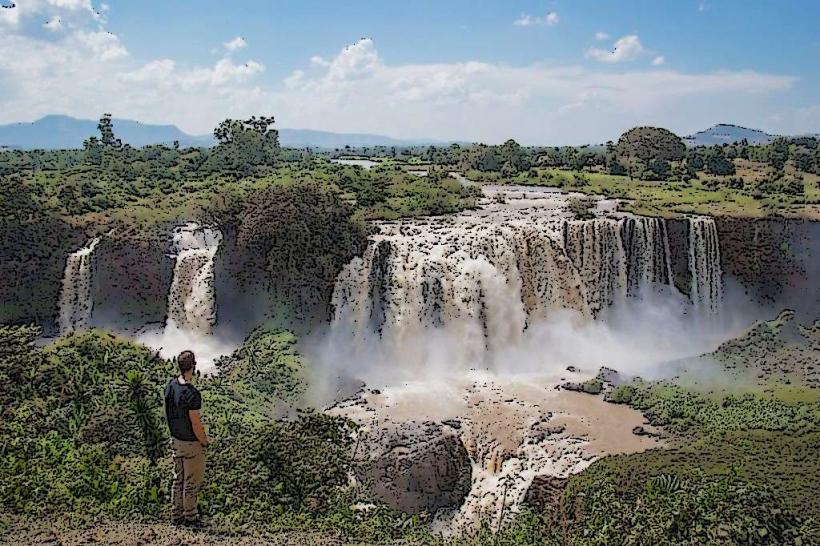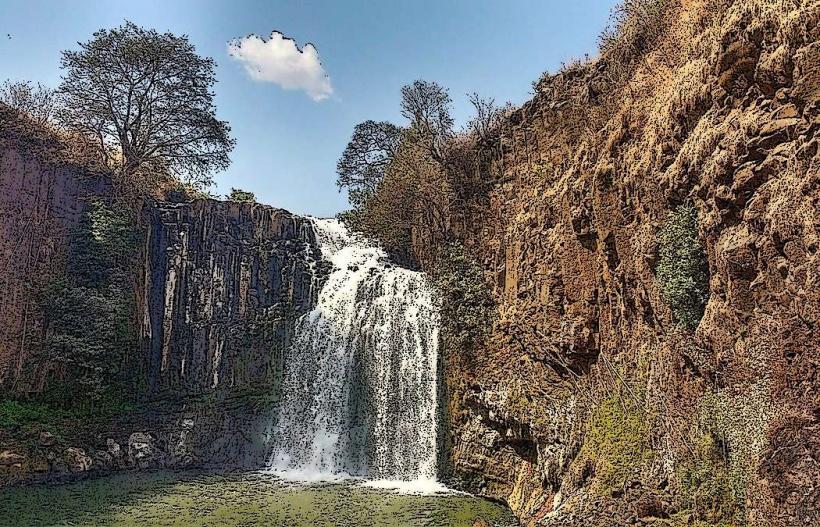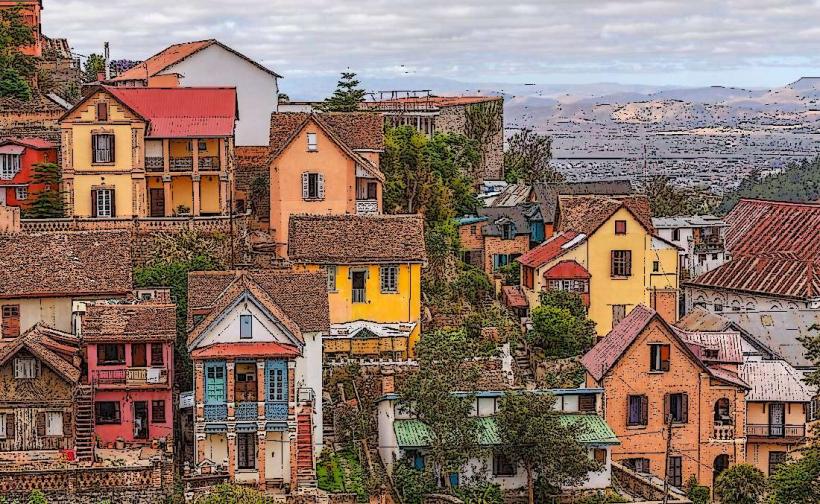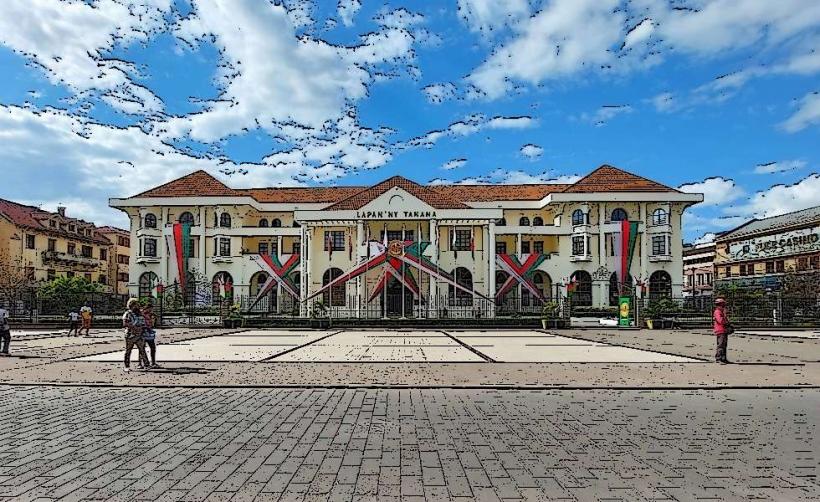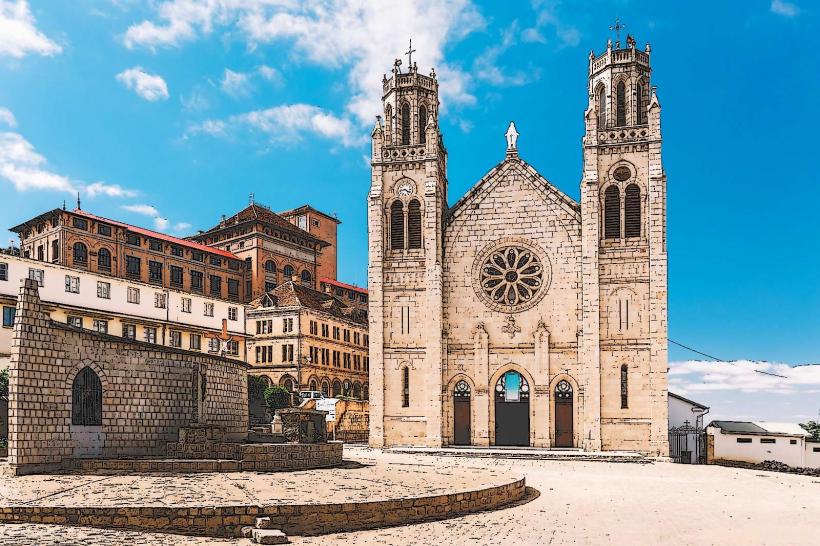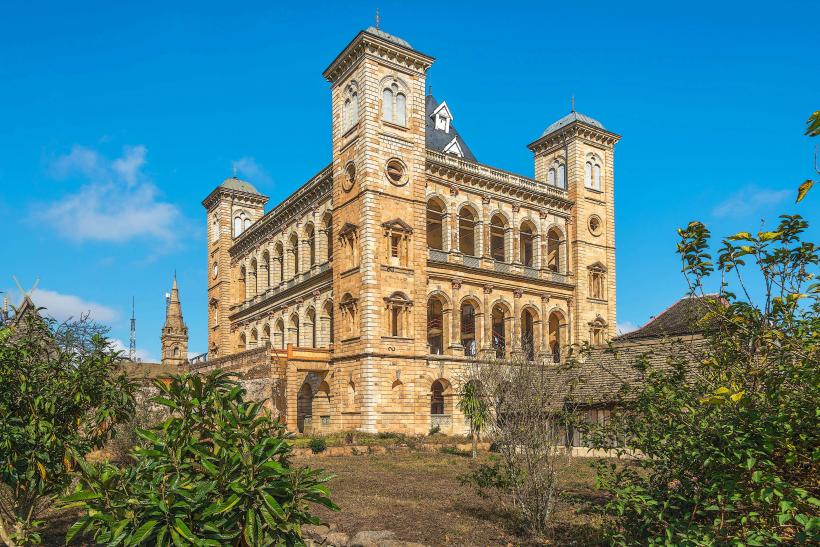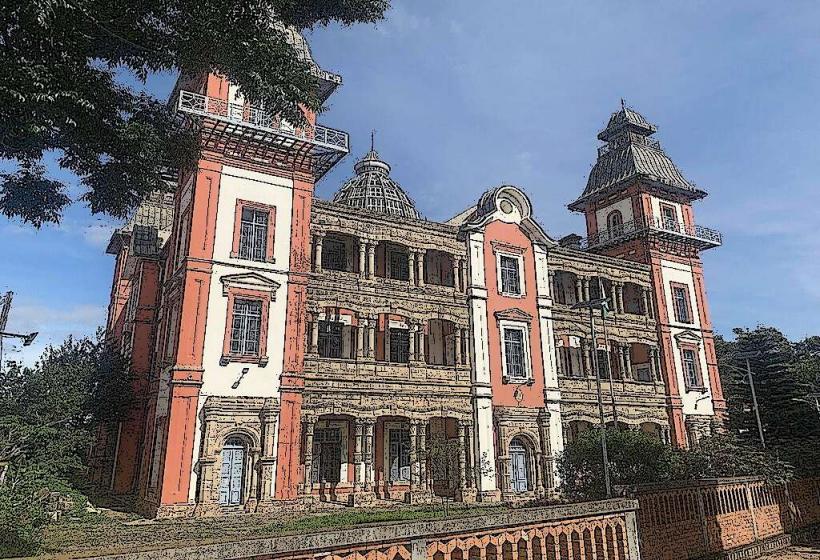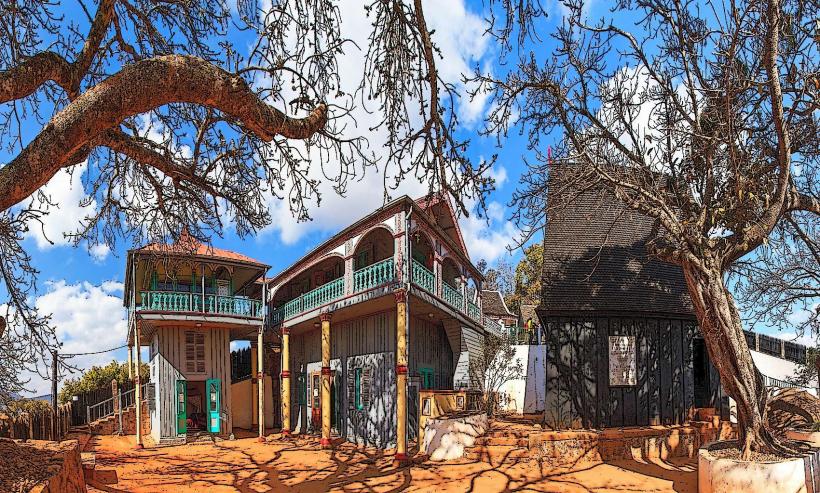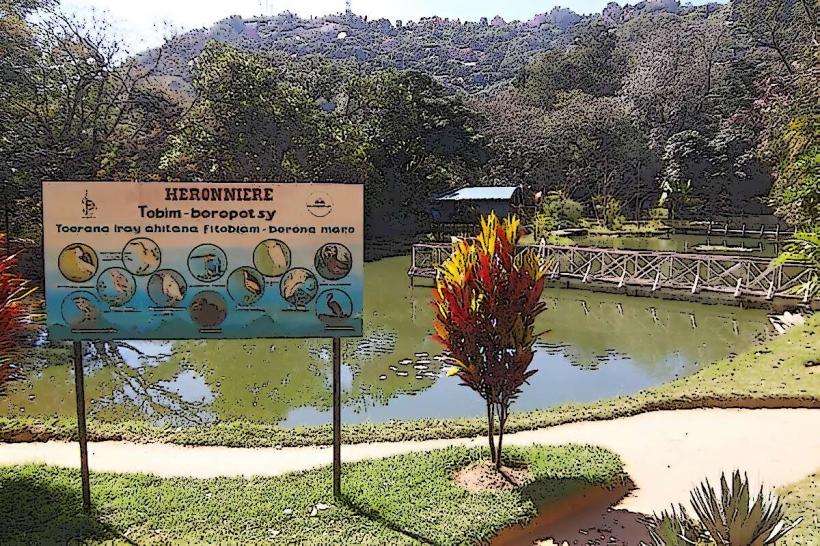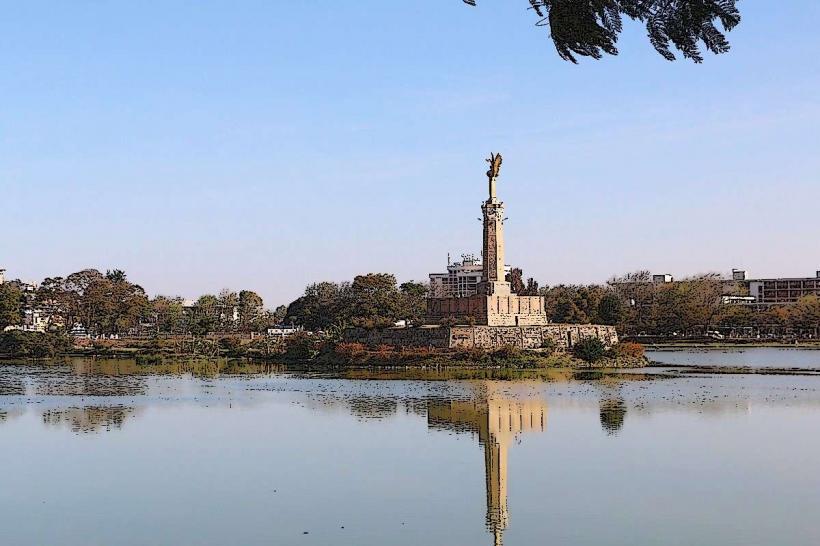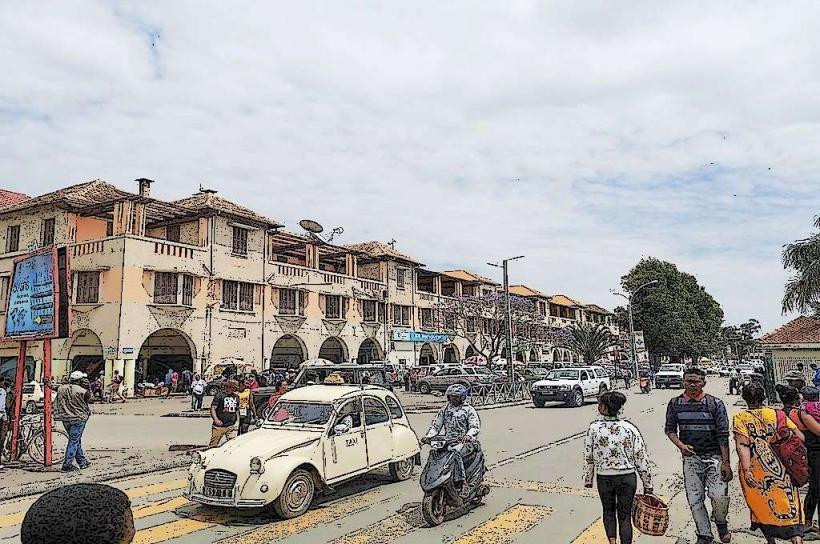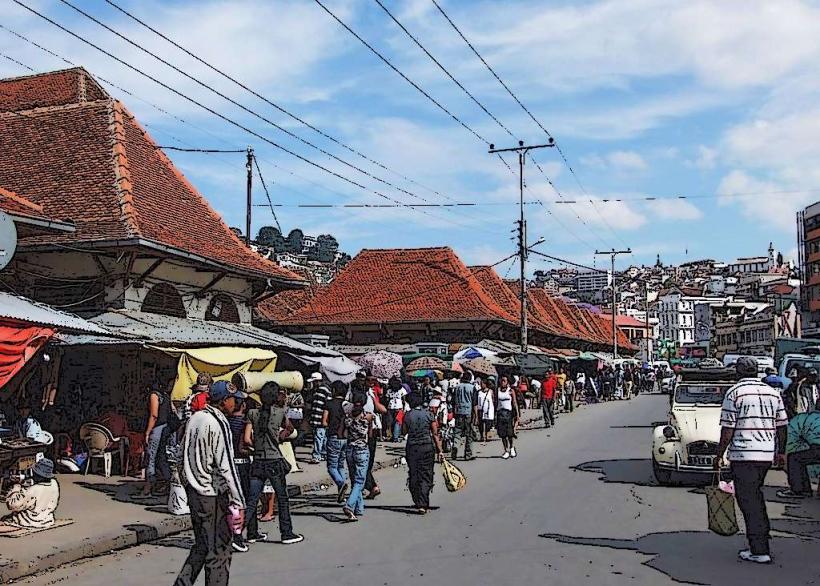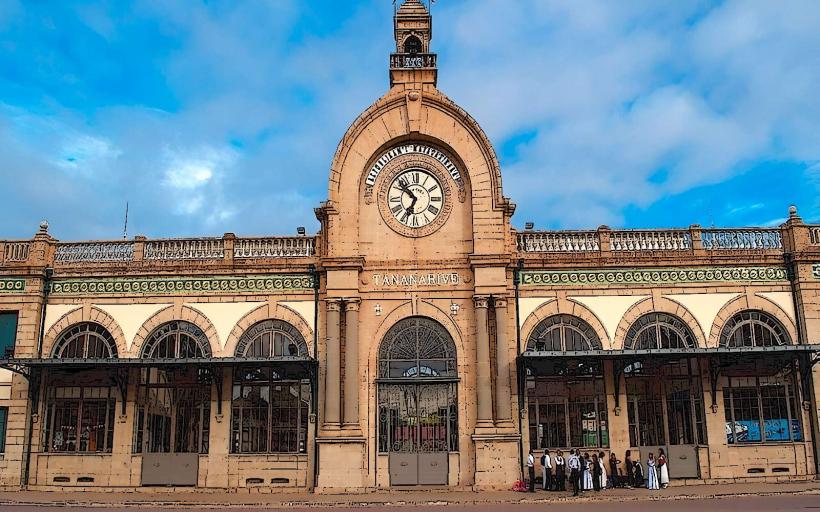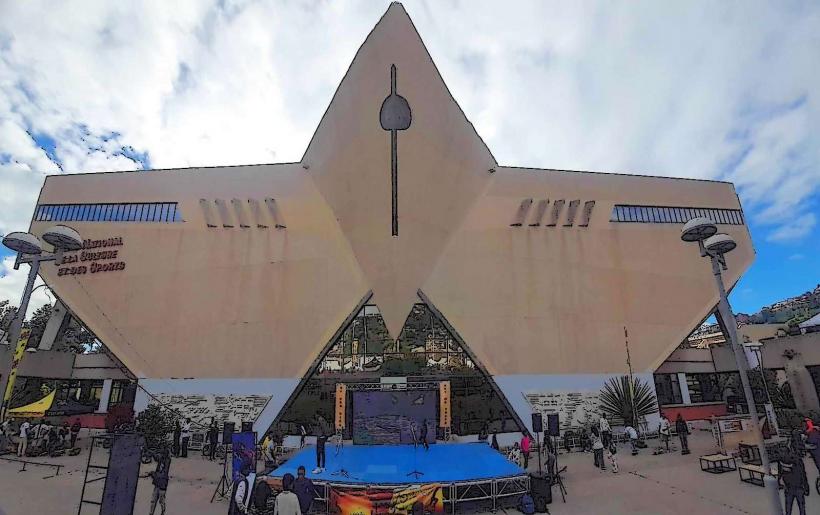Information
Landmark: Museum of Art and ArchaeologyCity: Antananarivo
Country: Madagascar
Continent: Africa
The Museum of Art and Archaeology in Antananarivo, Madagascar, is a cultural and educational institution dedicated to preserving and showcasing the country's rich artistic and archaeological heritage. Located within the campus of the University of Antananarivo, this museum offers visitors a unique opportunity to explore Madagascar’s history, traditions, and ancient artifacts.
Overview
- Establishment: The museum was established in 1970 as part of the university’s efforts to promote research and public education in the fields of art, archaeology, and anthropology.
- Purpose: It aims to document and preserve Madagascar's diverse cultural and historical legacy while providing a resource for scholars and the general public.
- Location: The museum is situated on the university campus in Ambohitsaina, a district in central Antananarivo.
Collections and Exhibits
The museum's collections cover a wide range of disciplines, focusing on the history, culture, and art of Madagascar.
1. Archaeological Artifacts
- Ancient Tools and Pottery: Exhibits include stone tools, pottery, and other artifacts from prehistoric sites, illustrating early human settlement and activities on the island.
- Burial Sites: Displays highlight burial customs with artifacts such as funerary urns, wooden effigies, and skeletal remains.
- Trade Evidence: Items such as imported ceramics and beads reveal Madagascar’s historical trade connections with Africa, Asia, and the Middle East.
2. Traditional Malagasy Art
- Wood Carvings: Showcasing the intricate craftsmanship of Malagasy artisans, especially the Zafimaniry style, which is recognized by UNESCO as part of the world’s intangible cultural heritage.
- Textiles: Traditional lamba garments and woven items are displayed, reflecting the skills and creativity of local communities.
- Sculptures and Effigies: Figures used in spiritual and cultural practices, including aloalo (funerary posts) and ceremonial artifacts, are prominently featured.
3. Historical Exhibits
- Colonial Period: The museum has displays that reflect the colonial era, including documents, photographs, and artifacts from French occupation.
- Royal Artifacts: Items from the Merina monarchy, such as regalia, jewelry, and ceremonial objects, provide insight into the island’s royal traditions.
4. Numismatics and Epigraphy
- Coins and Currency: A collection of coins and banknotes traces the evolution of Malagasy and foreign currencies used on the island.
- Inscriptions: Ancient inscriptions and scripts from various periods are preserved and interpreted.
5. Paleontology
- Fossils of extinct species such as the elephant bird and giant lemurs offer a glimpse into Madagascar’s prehistoric biodiversity.
Special Features
1. Educational Programs
- The museum conducts workshops, lectures, and guided tours aimed at educating both students and the public about Madagascar’s history and cultural diversity.
2. Research Facility
- As part of the University of Antananarivo, the museum supports academic research in archaeology, anthropology, and art history. Scholars often use its collections for study and analysis.
3. Temporary Exhibitions
- The museum regularly hosts temporary exhibitions, featuring themes such as contemporary Malagasy art, traditional crafts, and specific historical events.
4. Cultural Events
- Cultural performances, including traditional music and dance, are occasionally organized to complement the exhibits.
Visitor Information
1. Accessibility
- Location: The museum is easily accessible from central Antananarivo.
- Hours: It is generally open during university hours, but it’s advisable to confirm timings in advance.
- Admission Fee: An entry fee is charged, which helps fund the museum’s operations and conservation efforts.
2. Guided Tours
- Knowledgeable guides are available to provide in-depth explanations of the exhibits, making the experience more enriching.
3. Museum Shop
- Visitors can purchase souvenirs, books, and replicas of traditional art pieces from the museum’s shop.
Significance
- Preservation of Heritage: The museum plays a vital role in safeguarding Madagascar’s cultural and historical artifacts.
- Educational Resource: It serves as an important learning center for students, researchers, and the general public.
- Promotion of Malagasy Identity: By highlighting the island’s unique history and traditions, the museum fosters pride in Madagascar’s cultural identity.
Challenges
- Funding: As a university museum, it relies heavily on limited resources, which can impact its ability to expand and modernize.
- Conservation: Preserving ancient artifacts in Madagascar's humid climate presents ongoing challenges.
Conclusion
The Museum of Art and Archaeology is a treasure trove of Madagascar's rich cultural and historical legacy. It offers a fascinating journey through the island’s past, from its prehistoric beginnings to its artistic traditions and royal heritage. Whether you are a history enthusiast, a student, or a curious traveler, a visit to this museum provides a deeper understanding of Madagascar’s unique identity and global connections.

